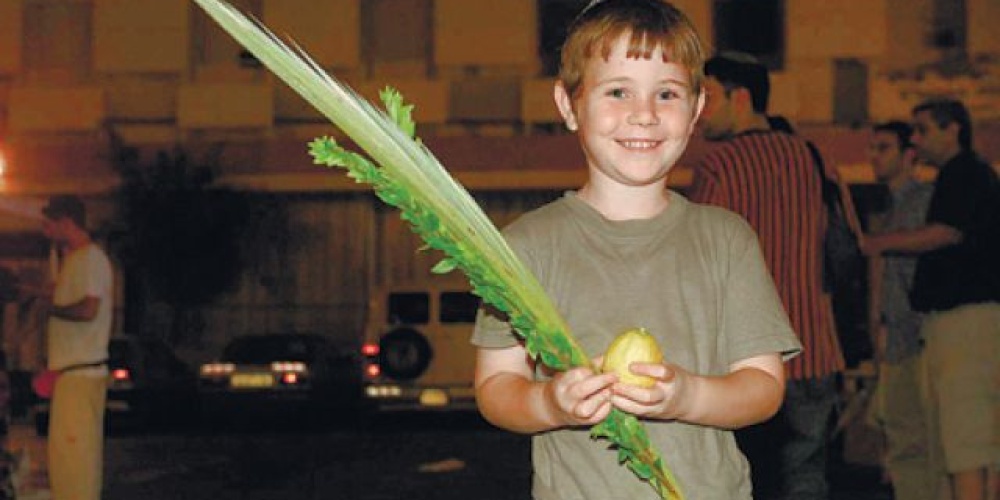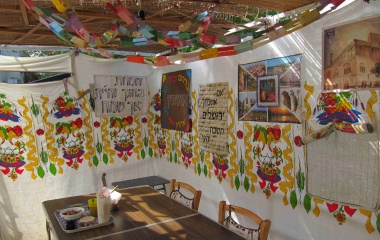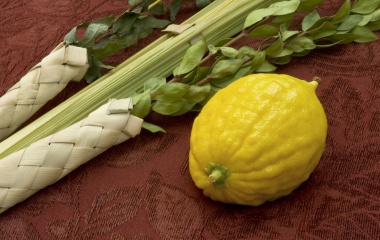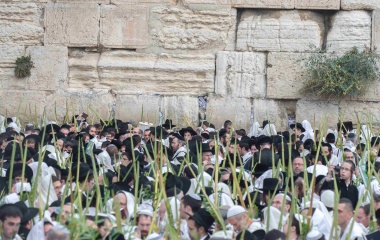
|
Despite the explicit command to take the lulav on the first day of Sukkot--and to blow the shofar on the first of day of the seventh month-- with no exception made if these days fall on Shabbat, our practice is not so. As Rabba explained, we are afraid, "lest one carry it in his hand and go to an expert to learn [how to properly do the mitzva] and carry it four cubits in the public domain", which would be a violation of the laws of Shabbat (Sukkah 43a). Yet the expertise needed to learn to blow the shofar was much greater than to shake the lulav. The shofar required, in the words of the Gemara, much "wisdom"; where all that was required to fulfill the mitzva of lulav was to pick it up. While the practice not to blow the shofar on Shabbat was already in practice during the time of the Mishna, such was not the case regarding the lulav. "The first day of Yom Tov that falls on Shabbat, all the people would take their lulav to the Beit Knesset" (ibid 41b). It was only at some point after the destruction of the Temple that the lulav was no longer taken when Yom Tov fell on Shabbat. The mitzva of lulav, being an expression of our joy "before the Lord"[1], was meant to be celebrated primarily at the Temple; and with its destruction, the mitzva lost much of its significance, even outside the Temple. Interestingly, the mitzva of shofar, which was blown on Shabbat in the Temple[2], continued after the destruction of the Temple first in Yavneh (the new seat of the Sanhedrin) and later in any place that had a beit din (Rosh Hashanah 29b). As Tosafot (Sukkah 43a, s.v.einhu) explains, the Sages did not want to completely nullify the mitzva of "shofar, which is [blown] so that the merit (literally, remembrance) of Israel rises up to our Father in heaven". Bringing the lulav to shul solved one problem--that of carrying on Shabbat--but raised another. "Ulekachtem lachem", you shall take for yourself; one must take one's own lulav to fulfil the mitzva. Hence, the Mishna continues, "on the morrow they would awake and come [to shul]; each would recognize theirs and take it, for the Sages said that a person does not fulfil his obligation on the first day of the festival with the lulav of his friend" (Sukkah 41b). Recognizing one's own lulav in shul is one thing, but doing that in the Beit Hamikdash is quite another[3]. Realizing the futility of even trying, the Mishna teaches that, "when the first day of Yom Tov falls on Shabbat, [they][4] would bring their lulav to the Temple Mount, and the chazanim[5] would take it from them and arrange them on the platform; the elders would leave theirs in the chamber, and they would teach them to say, 'Whoever gets my lulav in their hand, it should be theirs as a gift'". While this seems like an eminently practical solution and a beautiful expression of Jewish unity, unfortunately, it did not work in practice. "On the morrow, they awoke and came, and the chazanim put (lit. "threw") them [the lulavim] down before them, and the people grabbed them and they would come to blows against each other; and when the beit din saw that they were coming to danger, they decreed that each one should take it in his home" (ibid 42b). Oh, what the Jewish people fight about. How sad when basic human decency (and basic Torah prohibitions) are ignored, all in the name of serving G-d! Such is especially ironic regarding the lulav which, in rabbinic literature, is the symbol of Jewish unity, bringing together the different types of Jews. While we are obligated to "take" the lulav, we should emphasize "giving" the lulav. Let us emulate the practice of "Rabban Gamliel, Rabbi Joshua, Rabbi Eleazar ben Azariah, and Rabbi Akiba, [who] were travelling on a ship; and Rabban Gamliel alone had a lulav which he had bought for one thousand zuz. Rabban Gamliel took it and fulfilled his obligation with it; then he gave it as a gift to Rabbi Joshua who took it, fulfilled his obligation with it and gave it as a gift to Rabbi Eleazar ben Azariah who took it, fulfilled his obligation with it, and gave it as a gift to Rabbi Akiba who took it, fulfilled his obligation with it and then returned it to Rabban Gamliel". _______________________________________________________
[1] The biblical expression "before the Lord" specifically references the Temple. Not surprisingly, we find this expression as a central motif of Yom Kippur. [2] This, in keeping with the notion that rabbinical decrees, such as that of Rabba, did not apply in the Temple; in the words of our Sages, "priests are zealous". [3] Besides its much larger size and the influx of pilgrims arriving from across the nation, there were no seats in the Temple, in keeping with the law that "there is no sitting in the courtyard save for kings from the house of David" (Yoma 25a). [4] The expression kol ha'am, the entire nation, which appears regarding going to shul is noticeably absent regarding the Beit haMikdash, a subtle hint that not all Jews actually made the pilgrimage to Jerusalem for Sukkot. [5] The word chazzan means to see, and was used to describe the leaders of the community whose task it was to see and deal with the needs of the community. In modern usage, it has come to mean the prayer leader whose job is exactly the same--to understand and pray for the needs of the community.
Photo by Nir Keidar |



